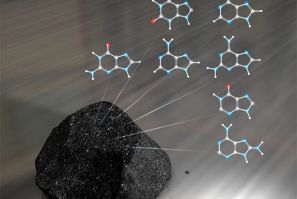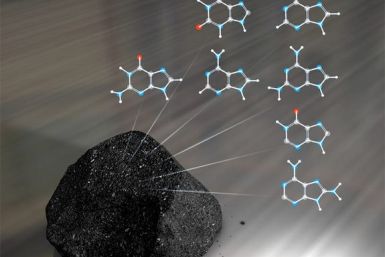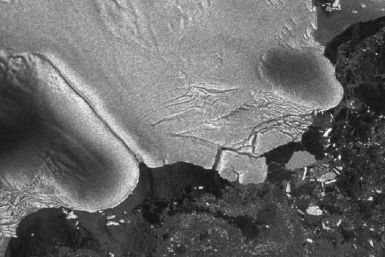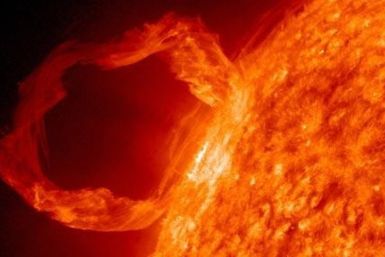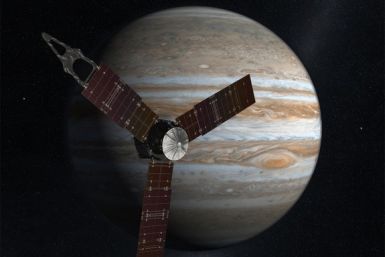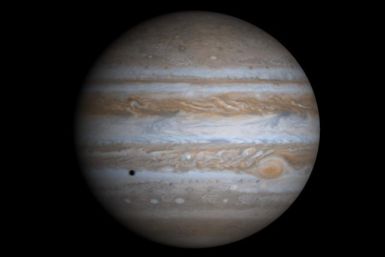Speaking at the Aspen Institute in Colorado on August 4, Former U.S. Vice President Al Gore once again warned of the impacts of global warming, but this time he sounded a bit defeated. But to whom he could be defeated? Yes, the global warming skeptics.
In addition to DNA findings in meteorites, the discovery of molecules linked with a vital ancient biological process, supports scientists' theory that life on planet Earth could have started from components from outer space.
The US National Oceanic and Atmospheric Administration (NOAA) has predicted the occurrence of a severe solar storm that could wreak havoc on Earth and severely disrupt human health and property.
Antimatter in Earth's magnetosphere, which was only a theoretical possibility so far, has been proved to be present in the form of a significant flux of antiprotons, generated by nuclear interactions of energetic cosmic rays with the terrestrial atmosphere. The trapped antiproton energy spectrum in the South Atlantic Anomaly (SAA) region has been measured by the PAMELA experiment for the kinetic energy range 60-750 MeV.
For the first time in history, scientists and researchers were able to find a direct connection between tsunamis and the creation of icebergs.
Meteorites, or space rocks, revealed amino acids which make up proteins, essential building blocks of life that could have been an important source of the organic compounds of life on Earth. Key DNA components exist in extraterrestrial meteorites, and another team has also discovered molecules linked with a vital ancient biological process.
Scientists believe that DNA building blocks embedded in meteorites found in Antarctica originated in space, bolstering the theory that meteorites crashing into earth may have carried some of the seeds of life.
New research has confirmed the old theory that a layer of antimatter particles encircles Earth. The discovery that a band of antiprotons lie in the magnetosphere, which is beyond the Van Allen belt, proves earlier prediction that Earth's magnetic field could trap antimatter. According to researchers, the new discovery could help science leapfrog several hurdles in its advanced space exploration projects in future.
The Mars rover Opportunity is nearing the end of a three year voyage to the Endeavor crater, a massive formation that has been Opportunity's destination since it left the smaller Victoria crater in August of 2008.
The discovery of molecules linked with a vital ancient biological process, coupled with key DNA ingredients found in meteorites by another team of researchers, support the idea that life on planet Earth could have started from materials from outer space.
Researchers confirmed DNA components exist in extraterrestrial meteorites, and another team also discovered molecules linked with a vital ancient biological process. What this means is that the earlist forms of life on earth could have been made partially from materials delivered to planet Earth from space.
The space agency has dished out $100,000 to 30 companies for one year studies on advanced space technology concepts.
Icebergs are twice the size of Manhattan
U.S. National Oceanic and Atmospheric Administration predicted four "extreme" solar emissions which could threaten the Earth this decade, and with solar flare activity expected to peak around 2013, the Sun is entering a particularly active time and big flares like recent one will likely be common during the next few years, federal scientists say.
Juno's mission is to unlock the mysteries of Jupiter, the solar system's biggest and most mysterious planet.
The National Oceanic and Atmospheric Administration, a federal agency that focuses on the condition of the oceans and atmosphere, said that a severe solar storm could cause global chaos, wreck satellite communications and take down the most important power grids in the world for a period of years.
Start the slideshow to view images from NASA?s past Mars expeditions suggesting evidence of water on the Martian surface.
Once there, Juno orbit 33 times around the Jupiter's poles and collect data that scientists have keen interest in, as the gas giant has an amazing composition, which is said to resemble a star, like the sun.
Why so big companies fall prey to cyberattacks so easily? According to hackers taking part in Defcon conference -- the world's largest hacking convention in Las Vegas -- workers at big corporations are poorly trained in security, which makes it easy for hackers to trick them into revealing key information.
Each planet in the solar system holds a special meaning for scientists. Mars, for example, is combed for evidence of liquid water and life. For Jupiter, it's all about its sun-like qualities.
Scientists have discovered flowing salt water on Mars, which has sparked conversations about potential alien life within the planet's surface. The images sent from NASA's orbiter unveiled flowing waters descending down from rocky slopes.
Prince Harry wants to be a NASA astronaut?







